- Books Name
- Class 6 Mathematics Book
- Publication
- ReginaTagebücher
- Course
- CBSE Class 6
- Subject
- Mathmatics
Introduction to The Decimals
What is decimal?
The Numbers used to represent Numbers lower than unit 1 are called decimal numbers. The decimal point or the period plays a significant part in a Decimal Number. This period separates the fractional part and whole number part in a decimal number. Place value of a number can be defined as the value of a number as per the place of that number in a number. Decimals Exemplifications Let us consider a decimal number0.5694 to see the different place values of each number.
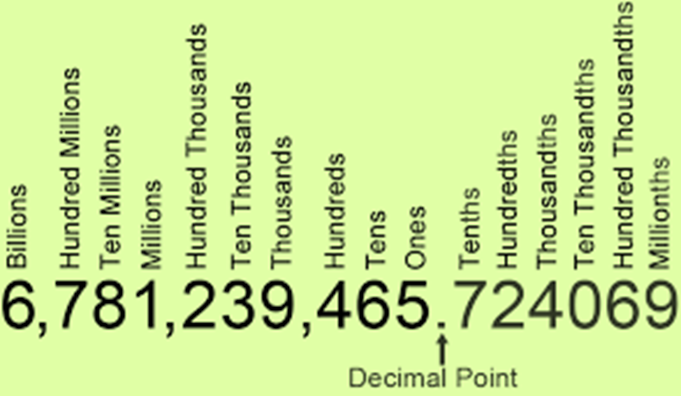
The value of the number at the first place after the decimal point is tenths place value. Tenths can be calculated as 1 unit divided in 10 equal corridor i.e. 0.1. Thus, considering this there are 5 tenths in the number0.5694.
The value of the number at the alternate place after the decimal point is hundredths place value. The number in that place tells you how numerous hundredths are there. Hundredths can be calculated as 1 unit divided in100 equal parts.i.e0.01. thus, considering this there are 6 hundredths in the number0.5694
The value of the number at the third place after the decimal point is thousandths place value. The number in that place tells you how numerous thousandths are present. Thousandths can be calculated as 1 unit divided in1000 equal corridor i.e. 0.001. Thus, considering this there are 9 thousandths in the number0.5694
Ten- thousandths
The value of the number at the fourth place after the decimal point is ten- thousandths place value. The number in that place tells you how numerous ten- thousandths are present. Ten- thousandths can be calculated as 1 unit divided into 10000 equal corridori.e0.0001. Thus, Considering this there are 4 thousandths in the number0.5694
For Example:
23/10 can be written in decimal as 2.3
23/100 can be written in decimal as 0.23
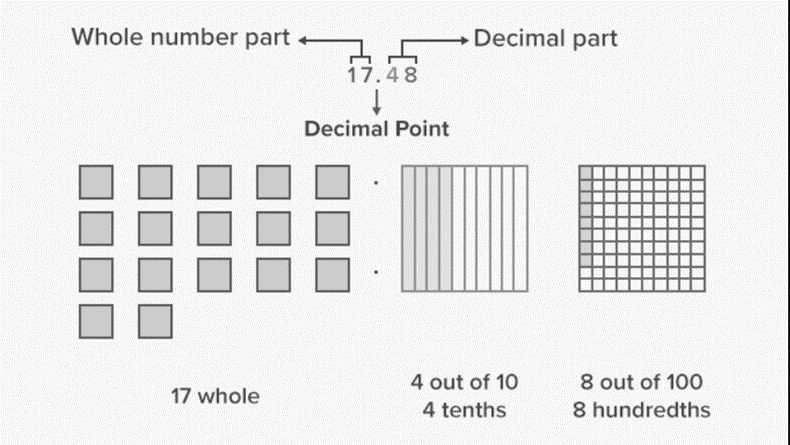
Knowing about Tenths
As we know that 1 cm = 10 mm, so if we have to find the contrary also
1 mm = 1/10 cm or one-tenth cm or0.1 cm.
Hence, the first number after the numeric represents the tenth part of the whole.
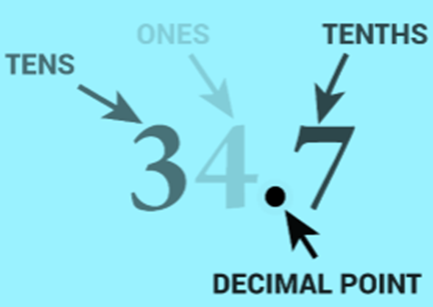
Tenths
This reads as “thirty-four point seven ”.
Representation of decimals on the number line,
Let us suppose we have to represent0.5 on the number line.
is lesser than 0 and lower than 1 also it can be represented on number line by dividing unit length between 0 and 1 into ten equal corridor and the fifth part will represent 0.5

Knowing about Hundredths,
In Hundredth, one block is divided into 100 equal regions and each part comprises1/100 of the entire block.
If a square is divided into 100 small squares the area of each small square will be1/100 or one hundredth of the entire square.
The area of the lower square shaded red is one hundredth of the entire square.
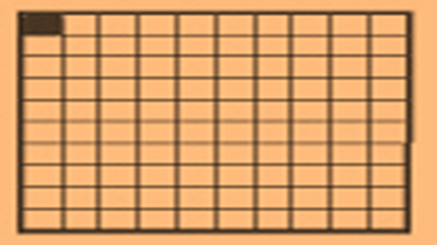
The decimal note is1/100 = 0.01.
Comparing decimals
While comparing two decimal numbers, we consider the following rules
We compare the place values of integers from left to the right.
Extra zeroes to the right of the last number of a decimal value do not change the value of the number.
Redundant depths between decimal point and a decimal number do not change its value.

Relationship between fractions and decimals
Numbers are values of fragments. Therefore, fragments can be converted into numbers and numbers can be converted into fragments.
Numbers as fragments
Conversion is done by seeing the place value of numbers.
In conversion to bit, the numeric can be written simply as a number with denominator having as numerous depths as the number of integers after the decimal point.
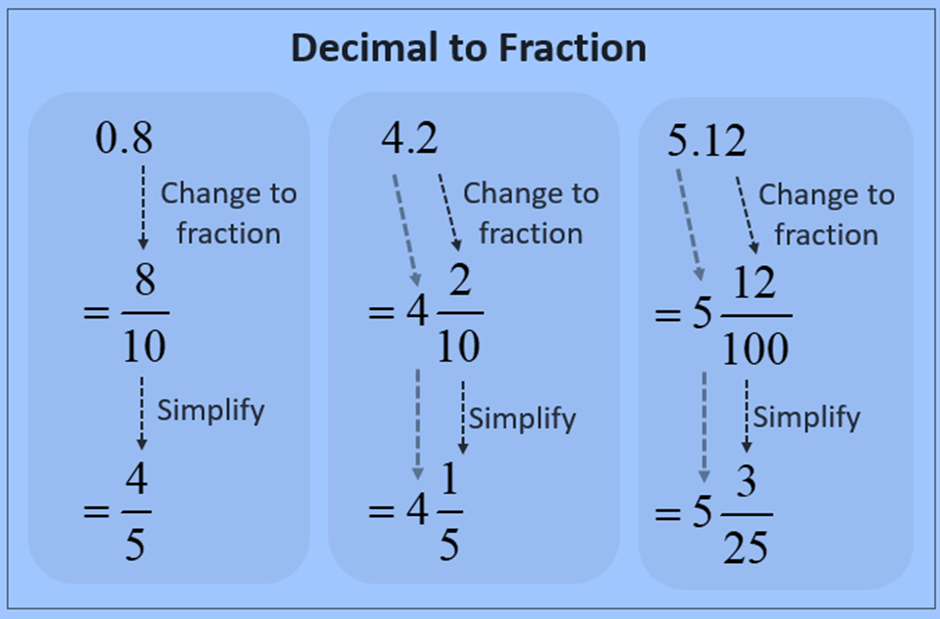
Problem Write the following as fragments in smallest forms.0.05
Result
Then 0 is at Ones place, 0 is at tenths place and 5 is at hundredths place.
= 0 * 1 0 *1/10 5 *1/100
= 0 05/100
= 5/100
= 1/20
There are two integers after the decimal point.
= 1/20

 Param Publication
Param Publication
 ReginaTagebücher
ReginaTagebücher
